#haseki sacbagli sultan
Explore tagged Tumblr posts
Photo








𝐇𝐀𝐒𝐄𝐊𝐈 𝐒𝐔𝐋𝐓𝐀𝐍𝐒: Saçbağlı
Not present in Sicill-i Osmani. Featured in Alderson instead. Uluçay suggested she was a handmaiden or a musahibe (companion). [Necdet Sakaoğlu, Bu Mülkün Kadın Sultanları] According to Evliya Çelebi, Saçbağlı was among the hasekis who were gifted the revenues of Egypt (the others being Hümâ-Şâh and Şekerpare)
177 notes
·
View notes
Photo
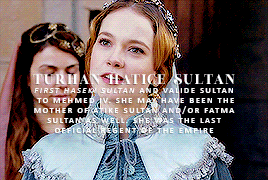
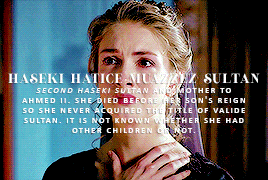
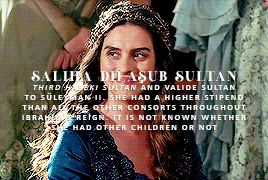

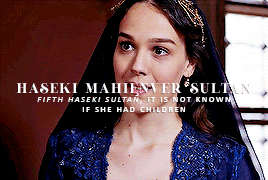


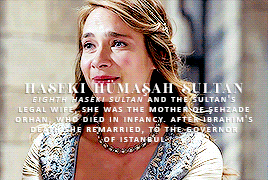
𝙤𝙩𝙩𝙤𝙢𝙖𝙣 𝙘𝙤𝙣𝙨𝙤𝙧𝙩𝙨: Sultan Ibrahim
The presence of more than one haseki was a significant change in the reigns of Murad and Ibrahim, signaling that the age of the favorite was coming to an end. In this period the meaning of the title haseki begins to shift from a single "favorite" to something more general like "royal consort," similar to the earlier khatun. This title deflation was a sign of the return of an earlier principle of royal reproduction, that of a number of concubines roughly equal in status. That other concubines were no longer consigned to languish in the shadow of a favorite is suggested not only by the fact that each was endowed with the title haseki but also that their stipends were on the whole equal. — Leslie P. Peirce, The Imperial Harem: Women and Sovereignty in the Ottoman Empire
#history#historyedit#ottoman history#turhan hatice sultan#haseki hatice muazzez sultan#saliha dilasub sultan#haseki ayse sultan iii#haseki mahienver sultan#haseki sacbagli sultan#haseki sivekar sultan#haseki humasah sultan#ottomanladiesedit#*consorts
196 notes
·
View notes
Photo





Ibrahim Han of the Ottoman Empire + the women in his life
#history#historyedit#ottoman history#kosem sultan#turhan hatice sultan#haseki hatice muazzez sultan#saliha dilasub sultan#haseki ayse sultan iii#haseki mahienver sultan#haseki sacbagli sultan#haseki sivekar sultan#haseki humasah sultan#sekerpare hatun#ayse sultan daughter of ahmed i#fatma sultan daughter of ahmed i#hanzade sultan daughter of ahmed i#kaya ismihan sultan daughter of murad iv#ottomanladiesedit#*womeninlife
391 notes
·
View notes
Photo






OTTOMANLADIES’ 2ND BIRTHDAY CELEBRATIONS
ottoman history + mysterious royal consorts – requested by anon
#history#historyedit#ottoman history#unnamed second haseki of murad iv#haseki mahienver sultan#haseki sacbagli sultan#haseki sivekar sultan#haseki ayse sultan iii#mahfiruze hatice hatun#haseki ayse sultan ii#ottomanladiesedit#*requested
384 notes
·
View notes
Note
Any standouts of personality among Ibrahim's hasekis besides Turhan? Do we know anything about the origins and influence of any besides the three that mothered sultans, Sivekar, or Telli Humuasha? It's so frustrating how little there is!
We probably do know some more about them, because there are so many ambassador reports that I haven't read or haven't been published, so I can only speak personally when I say that I don't have any more information about them except for what I have already written on this blog.
As for personalities, Kosem believed that Saliha Dilaşub would be more subdued than Turhan but honestly, was she right? I really don't know because she's such a non-entity. There is no indication of her personality not even during her (very short) tenure as Valide Sultan.
As for the "minor" hasekis — Ayşe, Mahienver and Saçbağlı — there's really nothing I can add about them.
#ask post#ask: ottoman history#saliha dilasub sultan#haseki ayse sultan iii#haseki mahienver sultan#haseki sacbagli sultan#turhan hatice sultan#kosem sultan#buffyboleyn
17 notes
·
View notes
Note
Ibrahim I's + harem and children
Consorts:
Haseki Turhan Hatice Sultan later Valide Sultan (?? - 4.8.1683): mother of Mehmed IV and maybe of Fatma Sultan and Atike Sultan as well, she was educated in the palace of Ibrahim’s sister Atike and then gifted to Kösem, to whom she was in service before being presented to the sultan. Probably Russian, Tavernier said in 1668 that she was Circassian instead. She was the last regent of the Ottoman Empire.
Haseki Hatice Muazzez Sultan (?? - 12.9.1687): Ibrahim’s second haseki and mother of the future Ahmed II. Nationality, place and date of birth are unknown. The earliest document that mentions her is dated 9 August 1642, and it is an order of Ibrahim to bring furniture from another mansion for her rooms in the harem. It is not known if she had other children. She never became Valide Sultan as she died in 1687, four years before her son became sultan.
Haseki Saliha Dilaşub Sultan later Valide Sultan (?? - 3.1.1690): origins unknown, she was Ibrahim’s third haseki sultan even though, according to Sakaoğlu, she was the first concubine to be presented to the new sultan. Mother of Süleyman II. She is called Aşübe Sultan in a palace document about some of her jewels. Her country of origin and ethnicity is unknown. Her stipend was higher than the other hasekis’, 1,300 aspers a day, throughout Ibrahim’s reign. It is not known if she had other children.
Haseki Ayşe Sultan: she was first mentioned in a palace document dated January 1645, where it is ordered to prepare the rooms for “the new haseki Ayşe Sultan”. She must have been the fourth haseki. It unknown whether she had children or not.
Haseki Mahienver Sultan: she is mentioned for the first time in a palace document dated 2 May 1646, where che is called “Fifth Haseki Mahienver Sultan”. It is unknown whether she had children or not.
Haseki Saçbağlı Sultan: she is mentioned as recipient of the treasury of Egypt in an undated document. She is traditionally considered the sixth haseki. It is unknown whether she had children or not.
Haseki Şivekâr Sultan (? - 1693): seventh haseki, she was allegedly the largest woman in the empire, weighing 150 kg. Armenian, she was Ibrahim’s true favourite for some time and even influenced the politics of the empire. It is not known whether she had children or not.
Haseki Hümaşah Sultan: eighth haseki, she is sometimes called telli haseki or simply haseki sultan, as she was the sultan’s wedded wife. She entered the harem only in 1647 but Ibrahim fell in love with her immediately and married her in a lavish ceremony. She received the palace of Ibrahim Paşa as a wedding gift, while Kosem’s daughter Ayşe, Fatma and Hanzade and Murad IV’s daughter Kaya Ismihan were ordered by the sultan to serve her. Hümaşah was mother to Sehzade Orhan, who died in infancy six months after Ibrahim’s execution.
Hubyar Hatun: wife of İbrahim Ağa, brother of Grand Vizier Ahmed Paşa, she took Ibrahim’s fancy for a while. Uluçay, on the other hand, believes she was a servant in the harem.
Şekerpare Hatun (? - 1649?): thought to be a harem servant by Naime, she was probably the High Treasurer of the harem. She held great influence over Ibrahim for a time and, together with Hubyar and Yahudi Harun, she used to take bribes in exchange for favours. Two months before Ibrahim’s dethronement, her wealth was confiscated and she was exiled to Egypt. There, according to Evliya Çelebi, she married Kara Musa Paşa. In Tarih-i Gılmani, it is said that matters of state were left to Cinci Hoca and Şekerpare Kadın, who caused great ruin in the empire.
Zafire Hatun: Georgian concubine, she became pregnant by Ibrahim during Murad IV’s reign, so Kösem Sultan gave her to the Chief Black Eunuch Sünbül Ağa so that he drowned her in the sea. Instead, the eunuch took her to his home where she had a son, whom she named Osman. The baby became known in Istanbul as “the bastard of the Chief Black Eunuch” and when Kösem Sultan found out, she exiled them all. On the route to Egypt, they were captured at sea and taken to Malta, where the child was declared an Ottoman Prince. Later on, he converted to Christianity and became a priest known as “Padre Ottomano” (in English: Father Ottoman). According to the Venetian ambassador who related this story, the tensions between the Ottoman government and the Venetians in 1645 were caused by this incident. It is not known what happened to Zafire.
Sakızula: shown by Alderson as one of Ibrahim’s consorts.
Hezarpare Ahmed Paşa’s wife: one of Ibrahim’s passing fancies, she was given Princess Beyhan Sultan to raise. According to Alderson, Hezarpare Ahmed Paşa was given the little princess as a wife in return.
daughter of Şeyhülislam Mu'id Ahmed Efendi: according to A. L. Castellan, Ibrahim wanted her but her father opposed it so the sultan had her kidnapped from the baths and later sent her back home.
Children:
Unnamed Princess (1640 - ?): she married Baki Bey, son of Grand Vizier Hezarpare Ahmed Paşa from his previous wife.
Mehmed IV (2.1.1642 - 6.1.1693): son of Turhan Hatice, 19th Ottoman Sultan
Süleyman II (15.4.1642 - 22.6.1691): son of Saliha Dilaşüb, 20th Ottoman Sultan
Fatma Sultan (9.1642 - 1657): maybe daughter of Turhan Hatice. She married in 1645 Musahip (Silahdar) Yusuf Paşa, who was executed by Ibrahim himself on 22 January 1646. A month later, her father married her to Musahib Fazlı Paşa, whom he removed from Istanbul a couple of months later. She died in 1657 and was buried in the Yeni Valide Mosque.
Gevherhan Sultan (1642 - 27.10.1694): she married Cafer Paşa on 23 November 1646. According to Alderson and Süreyya, she was married to Çavuşzade Mehmed Paşa instead until 1681. In 1692, she married Helvacı Yusuf Paşa.
Ahmed II (25.2.1643 - 6.2.1695): son of Hatice Muazzez, 21st Ottoman Sultan
Şehzade Murad (4.1643 - 1.1644)
Şehzade Selim (19.3.1644 - 9.1669)
Şehzade Osman (8.1644 - died young)
Beyhan Sultan (1645 - 15.9.1700): she was married to Küçük Hasan Paşa in 1646 but her husband died the following year. On 16 September 1647 she married Grand Vizier Hezarpare Şehri Ahmed Paşa. He was executed on 7 August 1648 and Beyhan became a widow again. She later married Uzun İbrahim Paşa, but he died in 1683. In 1689 Bıyıklı Mustafa Paşa, who died in 1699. Beyhan Sultan died on 15 September 1700 and was buried in Süleyman the Magnificent’s tomb.
Şehzade Bayezid (1.5.1646 - 8.1647)
Şehzade Cihangir (14.12.1646 - 1.12.1648)
Ayşe Sultan (around 1646 - ?): she married İbşir Mustafa Paşa in 1655 but her husband was executed in the same year. Nothing else is known about her.
Şehzade Orhan (9.1648 - 1.1650): son of Hümaşah. Uluçay does not give a date of birth but says that the little prince died 6 months after Ibrahim’s execution.
Atike Sultan (? - ?): possibly daughter of Turhan Hatice, as it is said she was Mehmed IV’s own sister. She married Sarı Kenan Paşa in 1648 and, when her husband was executed in 1659, she married Anatolian Inspector Mostarlı İsmail Paşa in the same year. She died at a young age in the reign of her brother.
Kaya Sultan (? - ?): she married Haydarağazade Mehmed Paşa in 1649, who was executed in 1661. date of death and burial are unknown.
Ümmügülsüm Sultan (? - 1654?): she married Mirahur Abaza Ahmed Paşa in 1653 but died shortly after.
Unnamed Princess (? - ?): she was engaged to Kuloğlu Mustafa Paşa but he did not accept the marriage (he would marry Mehmed IV’s daughter Hatice in 1675), so she married Cerrah Kasım Paşa instead, in January 1666.
sources:
A. D. Alderson - The Structure of the Ottoman Dynasty
Leslie Peirce - The Imperial Harem: Women and Sovereignty in the Ottoman Empire
Necdet Sakaoğlu - Bu Mülkün Kadın Sultanları: Valide Sultanlar, Hatunlar, Hasekiler, Kadınefendiler, Sultanefendiler
M. Çağatay Uluçay - Padişahların Kadınları ve Kızları
#anon#ask post#ask: ottoman history#*consortsandchildren#ibrahim i#turhan hatice sultan#saliha dilasub sultan#haseki hatice muazzez sultan#haseki ayse sultan#haseki mahienver sultan#haseki sacbagli sultan#haseki sivekar sultan#haseki humasah sultan#hubyar hatun#sekerpare hatun#zafire hatun#unnamed daughters of ibrahim i#mehmed iv#suleyman ii#ahmed ii#fatma sultan daughter of ibrahim i#gevherhan sultan daughter of ibrahim i#beyhan sultan daughter of ibrahim i#ayse sultan daughter of ibrahim i#atike sultan daughter of ibrahim i#kaya sultan daughter of ibrahim i#ummugulsum sultan daughter of ibrahim i
53 notes
·
View notes
Note
What is known about Ibrahim haseki Sacbagli?
Hello! Unfortunately, nothing. Her name too is subjected to variations: Saçbağı, Saçbağlı, Leyla Saçbağlı, etc etc.
She is mentioned with Hümaşah in a document about the treasury of Egypt next to the word “hasekileri”, which is the plural of haseki, and that’s it. She’s kind of a non-entity
19 notes
·
View notes